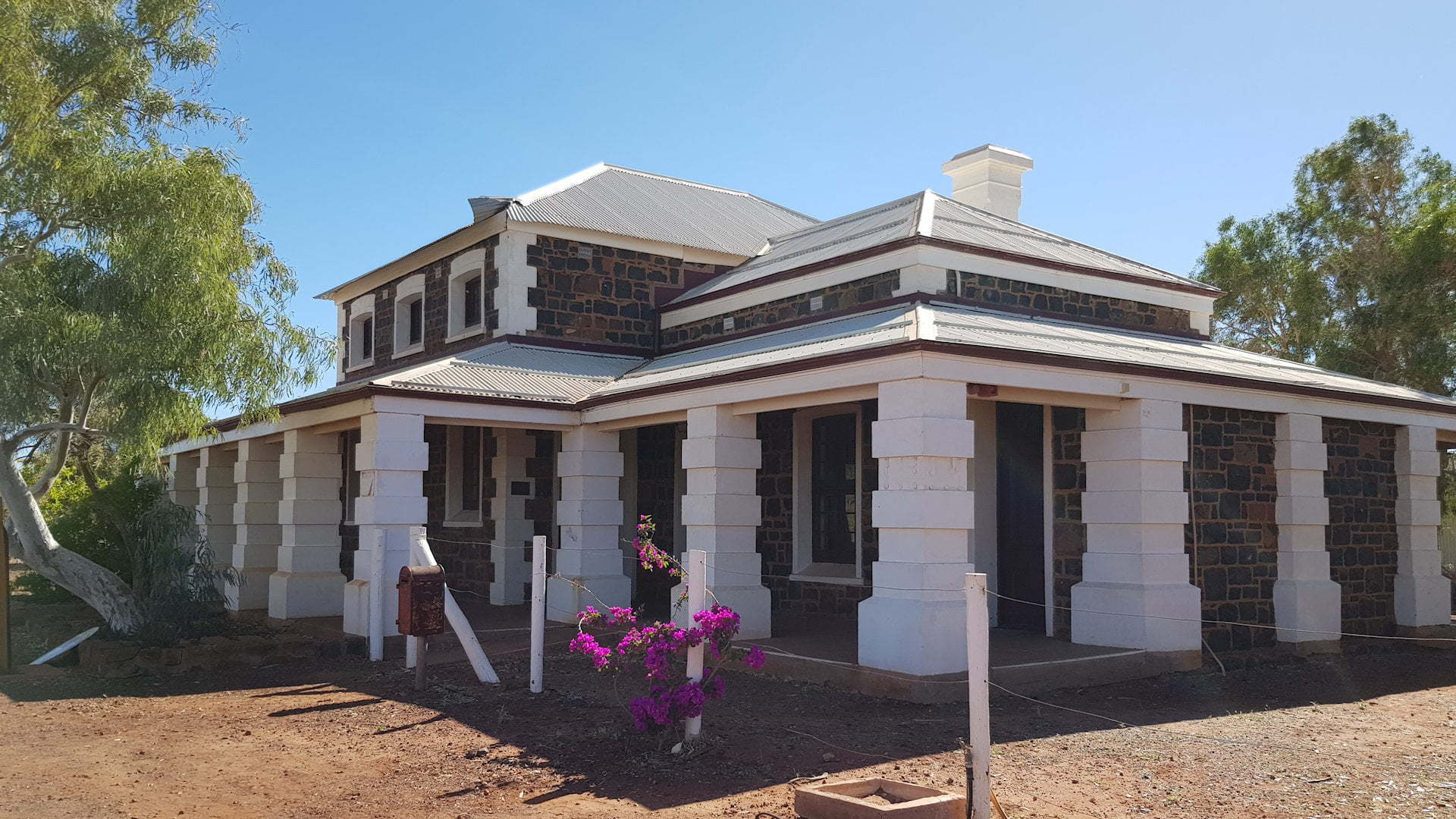
The Courthouse was built in 1895 during the declining years of Cossack ![]() , as were most of the stone buildings that remain in the abandoned ghost town.
, as were most of the stone buildings that remain in the abandoned ghost town.
All of the stone buildings were built in the 1890s, with the exception of the Post Office. The port moved to the deeper waters of Point Samson. Combined with the pearling industry being lost to Broome, Cossack started to decline.
The Courthouse is admired as an example of Government Architect, George Temple-Pool’s work. It was built with local stone and bricks brought to the port as paying ballast were utilised.
Large masonry piers support the verandah on all four sides and the roof raised in stages to a clerestory, adding scale to the single story building.
The beautiful building didn’t have a glorious period of service that was intended for it, due to the town’s short life after it was completed. No major offences were dealt with at Cossack with major cases held in Roebourne Courthouse. Most offences were drunk and disorderly, leaving service without permission, assault, theft, and supplying liquor to aborigines.
The courthouse is now the Shakespeare Hall Social History Museum with artefacts from the area, including things from the pearling industry.
There is information about pioneer William Shakespeare Hall and his family, the namesake of the museum. William had three children, Ernest, Aubrey and Hannah, that grew up in Cossack and attended the local Cossack school ![]() . There were two additional children who did not survive to adulthood.
. There were two additional children who did not survive to adulthood.
Although W.S. Hall bought four town lots in the children’s names in 1874, they never lived on them. The original house they lived in had two rooms and an attached kitchen and Ernest was still living there in 1930, more than 55 years after a town lot had been purchased for him.
William married Hannah Lazenby in 1869 and brought her to Cossack. He had various businesses in the following years including shop keeping, pearling and pearl trading.
In February 1895, William Shakespeare Hall drowned in Cossack Creek during an early morning swim. He was buried at can be found in the Cossack cemetery ![]() , along with his wife and sons. A tombstone was erected ‘as a mark of apprication and respect by the North West Pioneers’.
, along with his wife and sons. A tombstone was erected ‘as a mark of apprication and respect by the North West Pioneers’.
After his death, his children remained in Cossack and continued to develop businesses there.
To get there:

From the northern end of Roebourne along North West Coastal Hwy (Cleaverville Rd), turn into Point Samson-Roebourne Rd at the brown sign for Cossack. Follow Point Samson-Roebourne Rd for 8.2km and turn right into Cossack Rd at the brown sign. Follow Cossack Rd for 5.2km to reach the Cossack Historic Town. Turn left into Pearl Street and follow for 150m with the Cossack Museum on the right.


